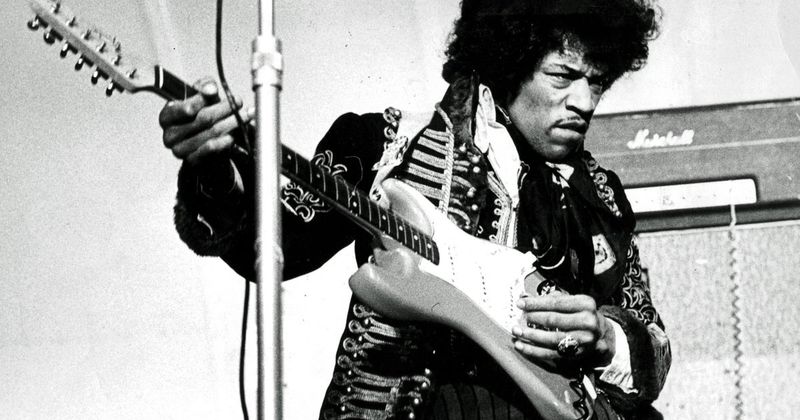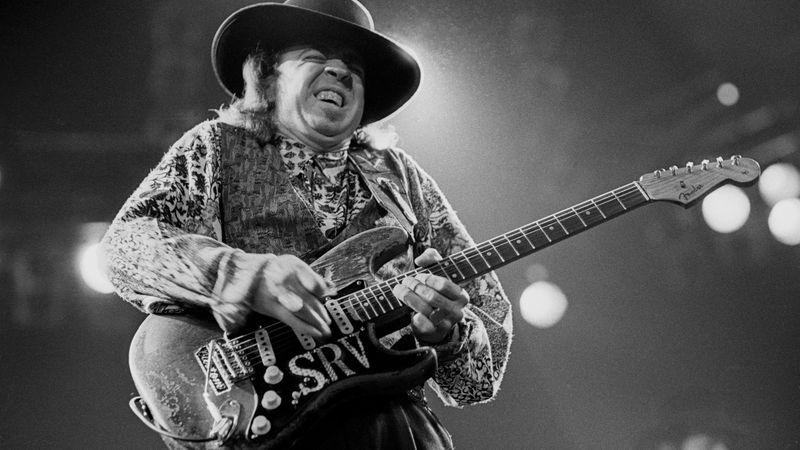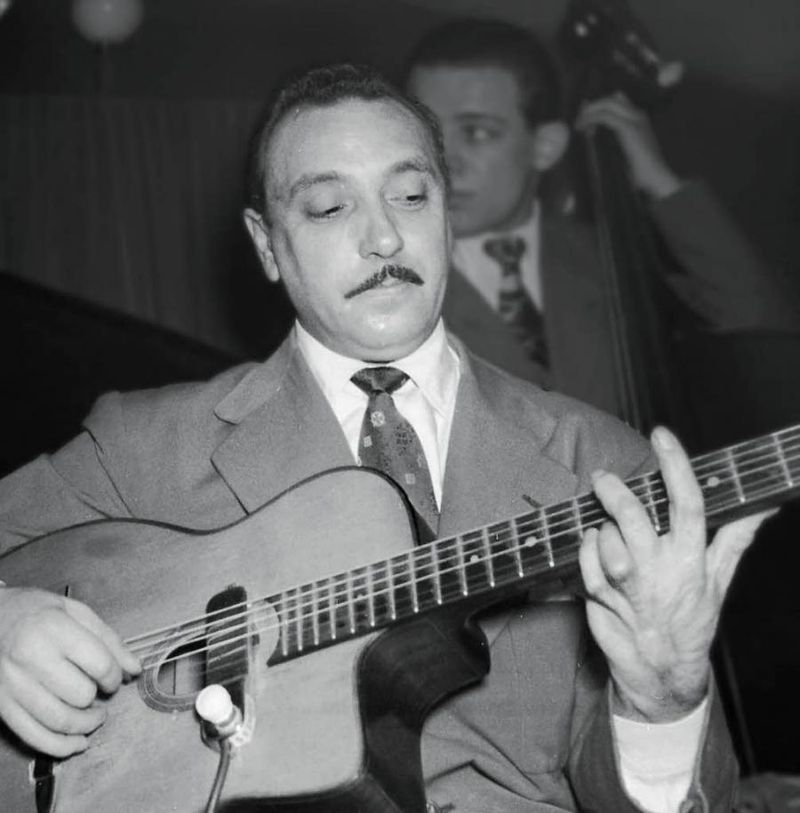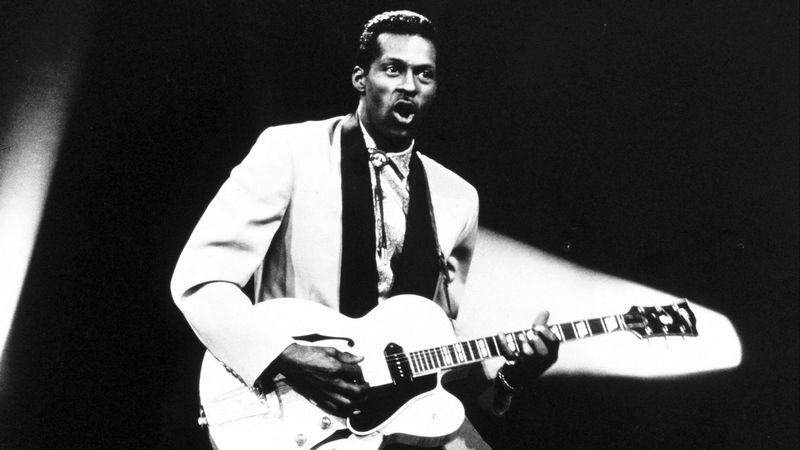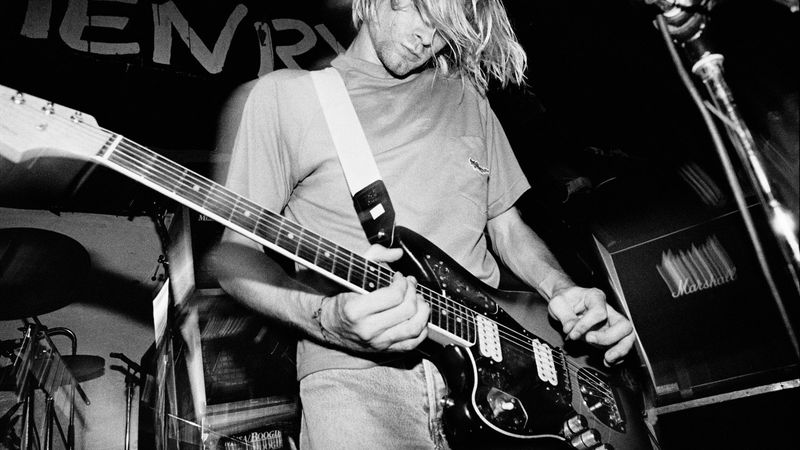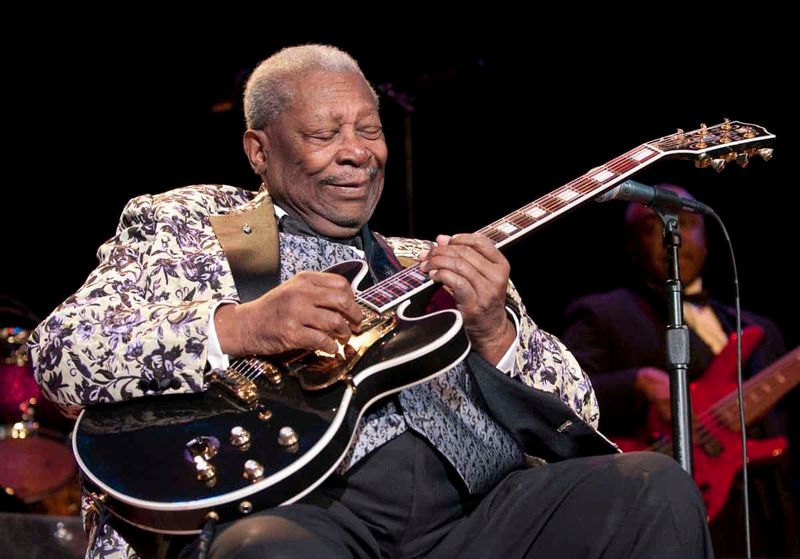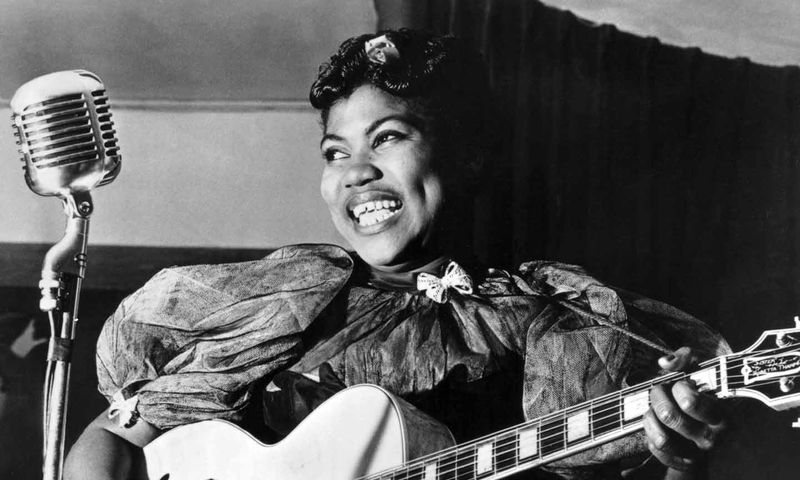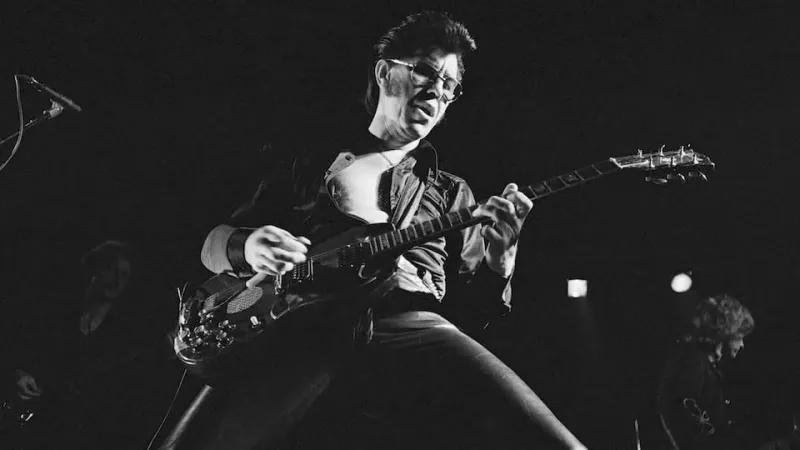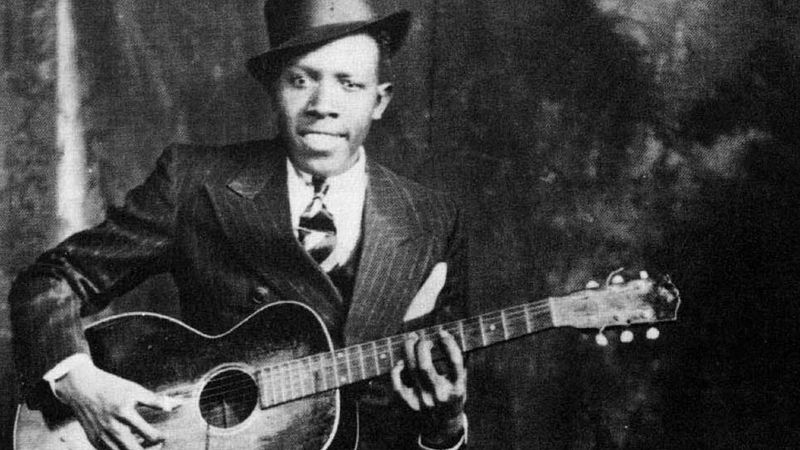Explore the intriguing stories and lesser-known facts about 18 legendary guitarists who shaped music history. These unsung heroes brought innovation, emotion, and uniqueness to their craft, yet some of their remarkable tales remain untold. Here’s a journey into the fascinating and sometimes bizarre world of these guitar legends.
1. Jimi Hendrix Was Almost Fired From His Own Band
Jimi Hendrix, before becoming a legend, was nearly dismissed from his band, The Blue Flames, for being “too wild.” Struggling as “Jimmy James” in New York clubs, his unorthodox style was misunderstood. It was a chance meeting with Chas Chandler of The Animals that turned his fortune. Chandler recognized Hendrix’s potential and took him to London, where he flourished. The wildness that nearly cost him his band became his trademark, captivating audiences worldwide. Without Chandler, history might have lost one of its greatest guitarists.
2. Eddie Van Halen Couldn’t Read Music
Despite his electrifying skill, Eddie Van Halen never learned to read music. Playing entirely by ear, he crafted revolutionary compositions, breaking traditional boundaries. His ignorance of musical “rules” enabled him to invent new techniques, such as tapping, which became a hallmark of his style. Van Halen’s approach was both admired and envied, as he created sounds that others could only dream of. His innate ability to explore uncharted musical territories helped redefine rock music’s landscape, leaving a lasting legacy.
3. Stevie Ray Vaughan’s Hands Were Mangled
Stevie Ray Vaughan’s fierce playing style took a heavy toll on his hands, leaving them mangled and scarred. His heavy strings and high action were merciless on his fingers. Yet, Vaughan played with open wounds, using superglue to seal cuts, driven by an unwavering passion for the blues. Despite the physical toll, his performances never faltered, radiating raw emotion and energy. Vaughan’s resilience became legendary, showing that true artistry often demands sacrifice. His music, undeterred by pain, continues to inspire guitarists worldwide.
4. Prince’s Guitar Tech Had to Lie About His Gear
When Prince performed “While My Guitar Gently Weeps” at the Rock & Roll Hall of Fame, his guitar was a custom-made replica, not a real Telecaster. To preserve Prince’s mystique, his guitar tech had to maintain this secret. Prince’s insistence on maintaining illusions was part of his allure, blending truth with myth. Though his music spoke volumes, the myths around his persona added layers to his enigmatic artistry. This secretive nature didn’t overshadow his genius but rather enhanced the allure surrounding his performances.
5. Randy Rhoads Was Terrified of Flying
Randy Rhoads, renowned for his work with Ozzy Osbourne, harbored a deep fear of flying. Ironically, he met his tragic end in a plane crash while buzzing a tour bus. His last words reportedly were, “I don’t want to do this.” Despite this fear, Rhoads’s talent soared to legendary heights, leaving an indelible mark on rock music. His unique playing style, blending classical influences with heavy metal, continues to inspire musicians. The tragic irony of his life resonates, adding a poignant note to his legacy.
6. Django Reinhardt Played With Two Fingers
Django Reinhardt, the jazz virtuoso, overcame a devastating injury that left his left hand crippled. Using just two fingers, he reinvented guitar technique and changed music forever. His creativity and resilience birthed new sounds, establishing him as a pioneer of jazz guitar. Reinhardt’s innovative spirit transcended physical limitations, showcasing the power of determination and creativity. His legacy lives on, inspiring musicians to push boundaries and redefine what’s possible. Reinhardt’s story is a testament to human ingenuity, proving that limitations can be transformed into strengths.
7. Chuck Berry Stole His Signature Riff
Chuck Berry’s famous “Johnny B. Goode” intro was borrowed from Louis Jordan’s “Ain’t That Just Like a Woman.” Berry later admitted to “borrowing” the riff, showcasing his knack for reinvention. Despite this, his charismatic performances and clever songwriting established him as a rock pioneer. His ability to blend storytelling with music captivated audiences and influenced generations of musicians. Berry’s legacy is a testament to the power of creativity and innovation, even if it involves a little borrowing from the past.
8. Yngwie Malmsteen’s Ego Almost Killed His Career
Yngwie Malmsteen’s unmatched talent was nearly overshadowed by his notorious ego. In the 1980s, record labels hesitated to work with him due to his demanding nature. Known for insisting that his band bow to him onstage, Malmsteen’s behavior risked alienating collaborators. Yet, his virtuosic playing style and neoclassical influences could not be ignored. His music transcended his reputation, securing him a place in rock history. Malmsteen’s career serves as a reminder that talent must sometimes be balanced with humility.
9. Brian May Built His Own Guitar From a Fireplace
Brian May’s iconic “Red Special” guitar was ingeniously crafted by him and his father from an 18th-century fireplace. This homemade instrument, featuring motorcycle parts for tremolo springs, became synonymous with his unique sound. May’s DIY approach reflected his inventive spirit, allowing him to create a signature tone that defined Queen’s music. His engineering background played a crucial role in this creation, highlighting the blend of science and art. The “Red Special” remains a symbol of creativity, proving that innovation often starts at home.
10. Kurt Cobain Hated “Smells Like Teen Spirit”
Kurt Cobain had a complicated relationship with Nirvana’s hit “Smells Like Teen Spirit.” He described it as a “Pixies rip-off,” feeling embarrassed by its massive success. Often performing it sarcastically slow during live shows, Cobain’s ambivalence highlighted his struggle with fame. Despite his personal feelings, the song became an anthem for a generation, encapsulating the spirit of grunge. Cobain’s raw emotion and honesty resonated with fans, making him an icon of authenticity. His legacy, though marked by internal conflict, continues to inspire.
11. B.B. King Never Learned Chords
B.B. King, the undisputed king of blues, never learned to play chords. Instead, he focused on single-note leads, leaving rhythm duties to his band. He humorously remarked, “I don’t know what a C chord is,” highlighting his unique approach to guitar playing. King’s expressive bending and vibrato became his signature style, proving that technical knowledge isn’t always necessary for emotional depth. His music touched hearts, transcending musical theory. King’s legacy is a testament to the power of individuality and passion in music.
12. Tony Iommi’s Missing Fingertips Changed Metal
Tony Iommi’s career-defining moment came after a factory accident left him with missing fingertips. He fashioned thimbles and tuned his guitar down to reduce string tension. These innovations led to the creation of doom metal, characterized by its dark, heavy sound. Iommi’s ability to adapt to physical limitations showcased his determination and creativity. Black Sabbath’s groundbreaking music owes much to Iommi’s ingenuity. His story is a powerful reminder that challenges can be transformed into groundbreaking opportunities, influencing countless musicians.
13. Sister Rosetta Tharpe Was Erased From Rock History
Sister Rosetta Tharpe, often dubbed the “Godmother of Rock ‘n’ Roll,” wielded significant influence yet was nearly erased from rock history. Her powerful guitar playing inspired legends like Elvis Presley, Chuck Berry, and Little Richard. Despite her contributions, Tharpe was marginalized, largely due to being a black woman in the 1940s music scene. Her dynamic performances and gospel roots laid the groundwork for rock music’s evolution. Tharpe’s legacy is a reminder of the overlooked pioneers who shaped music history.
14. David Gilmour Was Fired From Pink Floyd… Twice
David Gilmour’s journey with Pink Floyd was tumultuous, as he was fired not once but twice before “Dark Side of the Moon.” Initially dismissed for “not being creative enough,” Gilmour’s perseverance led to his rehiring. His haunting guitar solos and ethereal soundscapes became integral to the band’s identity. Gilmour’s experience illustrates the complexity of creative collaboration, where persistence and vision can overcome adversity. His contributions to Pink Floyd are celebrated, showcasing the transformative power of resilience in the face of challenges.
15. John Frusciante Quit RHCP Because of a Ghost
John Frusciante’s first departure from the Red Hot Chili Peppers was shrouded in mystery, as he claimed a haunted house in Los Angeles drove him to madness. Battling addiction and supernatural fears, his exit marked a dark chapter in his life. Upon returning, Frusciante was clean and rejuvenated, bringing renewed creativity to the band. His ability to overcome personal demons and reconnect with his art highlighted the transformative power of music. Frusciante’s story speaks to the mystical connection between creativity and personal growth.
16. Link Wray Stabbed His Amp to Invent Power Chords
Link Wray’s innovative spirit led him to stab his amplifier’s speaker to create distortion for “Rumble.” This act of defiance birthed power chords, a cornerstone of rock music’s sound. Wray’s rebellious approach faced backlash, with “Rumble” being banned for “inciting riots.” Yet, his willingness to challenge norms paved the way for future guitarists. Wray’s exploration of sound textures expanded the sonic palette of rock, proving that sometimes, breaking the rules leads to groundbreaking creativity. His legacy inspires musicians to push boundaries.
17. Paco de Lucía Was Forced to Play Flamenco
Paco de Lucía’s journey to becoming a flamenco legend began with a strict upbringing. His father locked him in a room for 12 hours a day, forcing him to practice relentlessly. This brutal regimen shaped de Lucía into one of the greatest flamenco guitarists ever. His technical mastery and emotive playing style redefined the genre. Despite the harsh methods, de Lucía’s passion for flamenco flourished, leaving an indelible mark on music history. His story reflects the intense dedication required to achieve greatness.
18. Robert Johnson’s “Devil” Legend Was a Cover-Up
The legend of Robert Johnson selling his soul to the devil at a crossroads was likely a cover-up for his obsessive practice. Johnson’s rapid mastery of the guitar puzzled many, leading to the myth of supernatural intervention. In reality, his dedication and secretive practice sessions forged his extraordinary talent. Johnson’s haunting blues and storytelling captivated audiences, influencing countless musicians. His story embodies the allure of folklore in music legends, where truth and myth intertwine to create an enduring legacy.

